Continued from Thailand – Laos: Day 8 – Part 3 – Bangkok City Pillar Shrine. For pre-travel, please refer here.
About 100 meters from the Bangkok City Pillar Shrine, there is a building that houses an artillery museum, government offices and the Thai defense ministry.
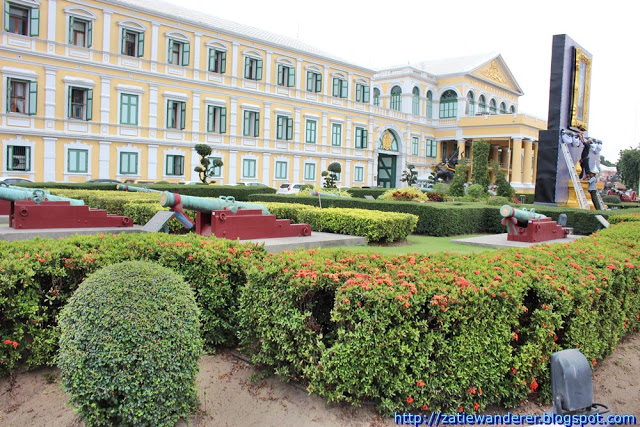
At this point, the guards do not allow visitors to enter the cannon museum compound, probably because of the ongoing mourning ceremony.
Location of the Thai Ministry of Defense or “Old Big Gun Museum”.
So, we just hovered around the outside (front) only because 2 to 3 soldiers were guarding there.
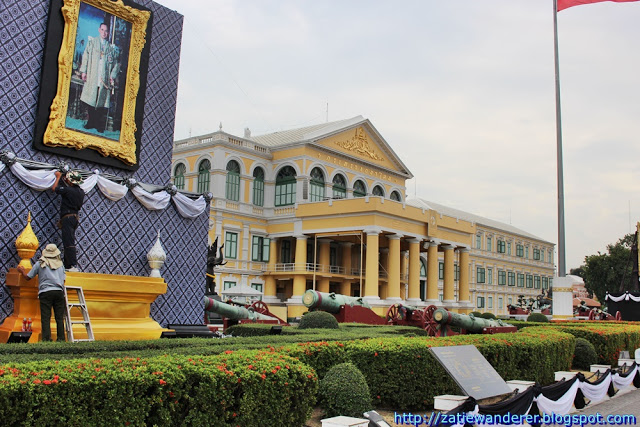
With my camera that can only zoom 3X, I tried to get a picture of the cannon. Do you know the name of this cannon? It is called the Great Cannon which exists in three units, namely the Sri Patani Cannon, Sri Nagara and Sri Mahalela. The cannon found here that I had time to research is the Sri Patani Cannon (Phaya Tani).
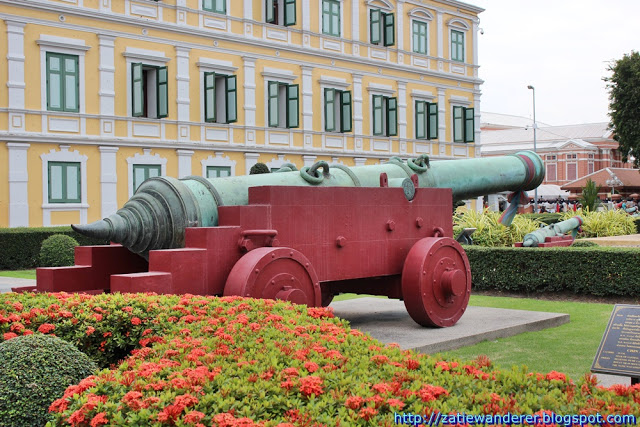
Ok, how about the history of these cannons? Here I quote from Wikipedia and I choose only the important ones:
In response to rumors of a Siamese attack on Patani, the then King of the Malay Kingdom of Patani, the Blue Queen (1616-1624), assigned a Chinese-Muslim man named Tok Kayan (Lim To Khiam) to lead the construction of several cannons for the kingdom. Three cannons were built namely Sri Patani, Sri Nagara and Mahalela. Sri Patani and Sri Nagara have the same size while Mahalela is smaller which is only 5 cubits 1 span. And these Seri Nagara and Seri Patani cannons are the largest in Southeast Asia. These cannons managed to block four Siamese attacks on Patani in 1603, 1632, 1634 and 1638.
After the fall of Ayutthaya in 1767, the Patani government under the rule of Sultan Muhammad (1776-1786) had tried to free itself from the Thai threat (which had defeated the Siamese government in Ayutthaya). However, in 1785 the Thai army under the leadership of Commander Phraya Kalahum had succeeded in defeating Patani. Two large cannons namely Sri Patani and Sri Nagara were taken as booty, however, Sri Nagara had fallen into the sea in Kuala Patani while about to be transferred to the ship. Mahalela’s cannon has disappeared without a trace.
In 1787, King Rama I ordered the construction of a cannon the same size as Sri Patani’s named Narai Sanghan (“Narayana the Killer”), to be placed in conjunction with the confiscated Sri Patani cannon.
Meanwhile, I took pictures of some old cannons found here. Here, all types of cannons are either made by Siamese or Patani and mixed.
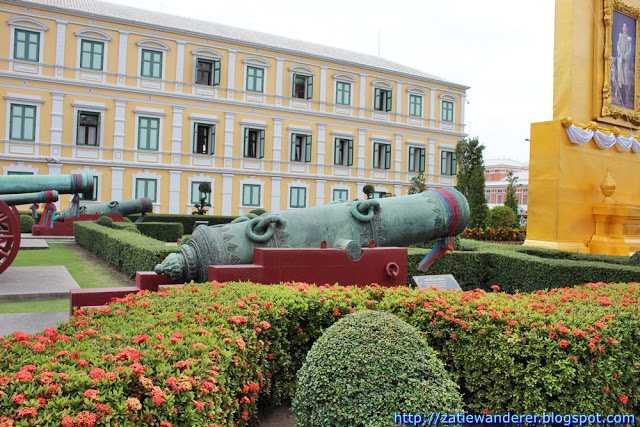
The Sri Patani cannon is a symbol of the grandeur of the Thai Ministry of Defense building.
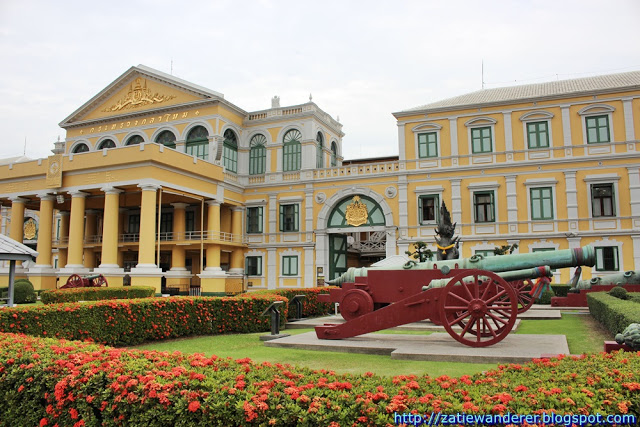
The Sri Patani cannon is very long. It was once the greatest cannon in Southeast Asia. Like the US planes or warships that are so great nowadays.
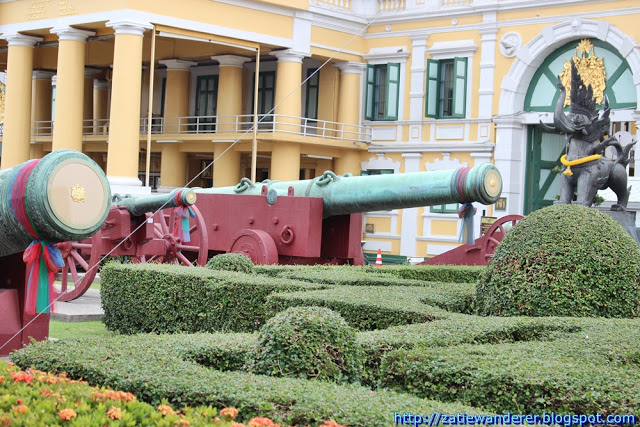
Since this is the only view that can be obtained, we were not long here and moved towards somewhere along the way. The funny thing is, we just follow the people who pass by here entering a street.
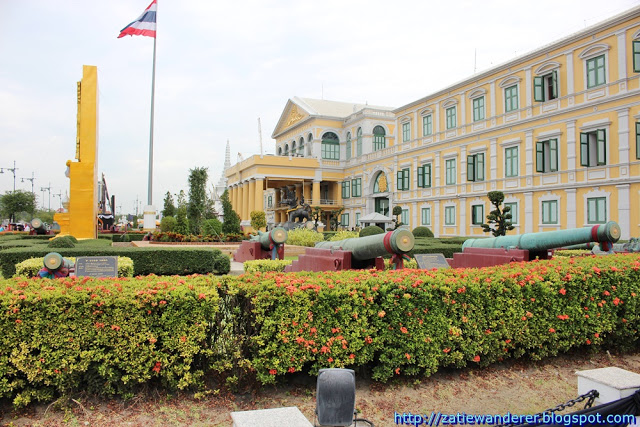
That is the street where the Royal Thai Survey Department building is located.
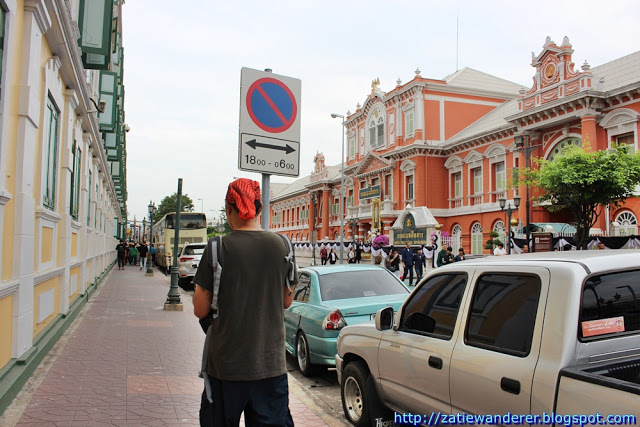
The feature that I am interested in with their ministry building is that it still retains the old construction and site. But if compared to Putrajaya in Malaysia, in the next 100 years it will also look old like this building.
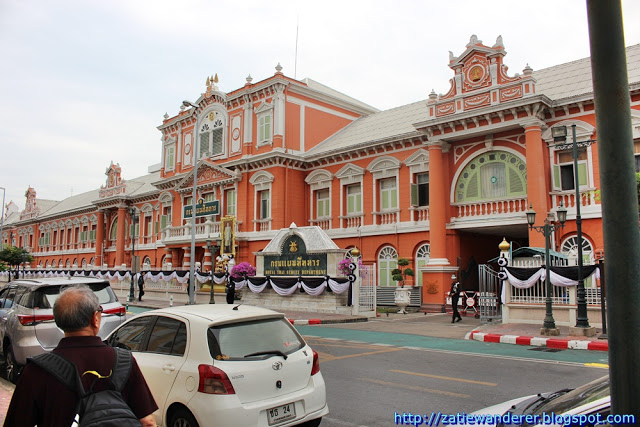
Location of the Royal Thai Survey Department building.
I still remember the days before the existence of Putrajaya. Our government buildings are scattered around Taman Duta, Pusat Bandar Damansara, Dayabumi buildings and other places.
Do you see a lot of people in front of us? The method of following the crowd works well.

At the end of the street, we hailed a taxi to go to Hello Kitty Bangkok! Women definitely love it.

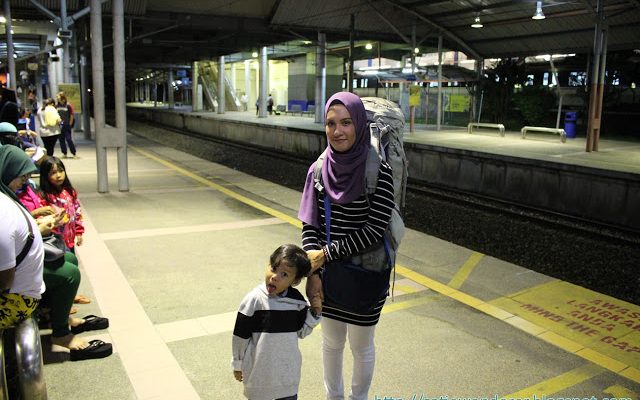
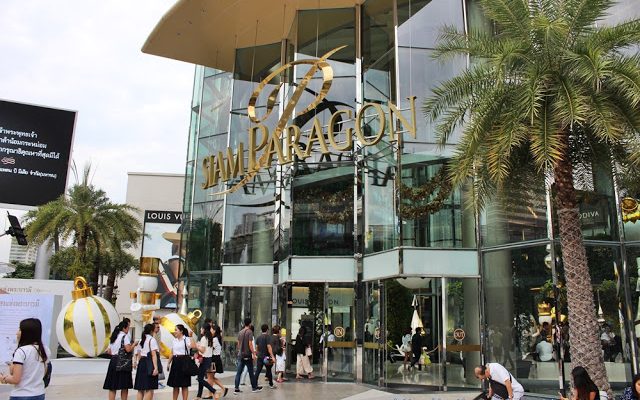
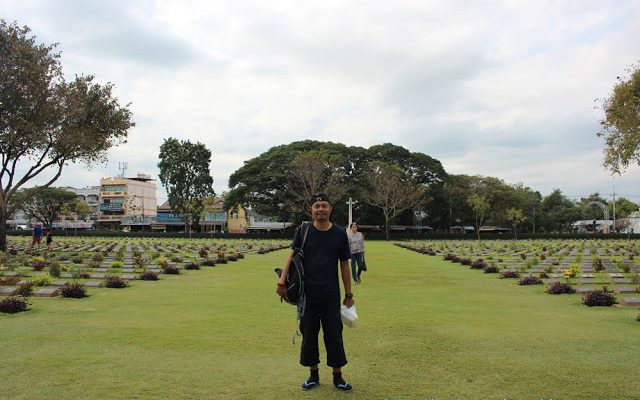
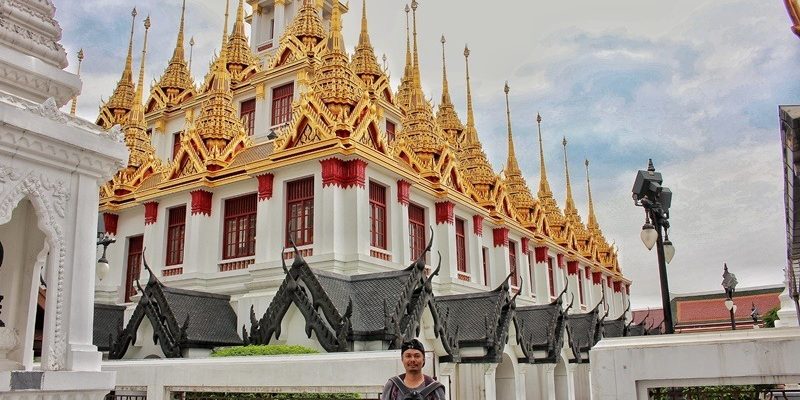
Leave a Reply